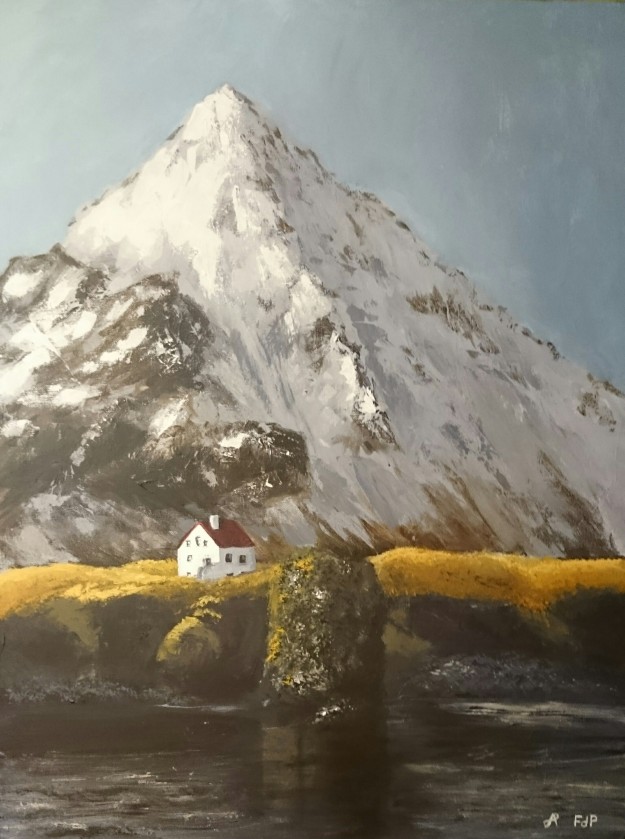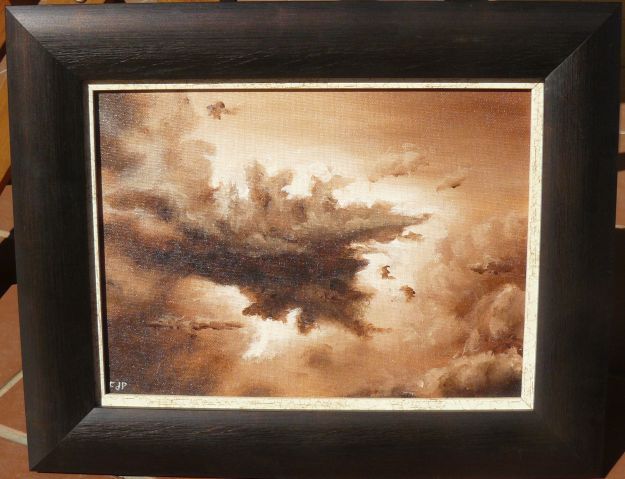Something bothered me about the Red Hill painting that I did over the weekend. I subsequently took the photo of the painting and worked it in my favorite iPad app ProCreate (something like Photoshop for the iPad) to see what the impact would be of some changes. I wanted to change the clouds since they looked like grade 1 crayon clouds. I also wanted to put a little focus on the middle head and was contemplating the removal of the little workers’ house to the left in the picture. From ProCreate I saw that the change in the sky and the focus on the middle head will work, but my artistic adviser (my wife) wanted me to leave the little house in, so I followed her advise, especially since the painting will be hanging in our house.
And so I worked the sky until it worked and felt like the sky in the Little Karoo – fresh and bright blue in a way that you can only find in the Karoo. I worked the middle head and put the focus on it in a satisfactory way until I knew that I had to stop and this is the result. I tried to do something of a spotlights effect on the middle head, but I am not sure it worked. I am still struggling with photographing my paintings, so the colour looks different from the previous painting.

Something in this painting just works for me. My favorite online art teacher (Richard Robinson) recently made the following statement in reaction to the question of “Why do we paint?”. He said a lot of things, but then concluded with the comment: “One of my favorite moments is sitting back with a coffee and absorbing a freshly finished painting – seeing how my passion translated itself into paint. If the translation is garbled their is inevitably disappointment, but if the translation is true the coffee seems to taste extra good.” This is where I am now. It is 23:19 at night and I decided to stop painting. I can still do a lot of things and say a lot of things about the painting. The balance is probably not right and there is a discrepancy in the details in the left and middle head, but I decided that I am finished and that the painting says what I wanted it to say. And now I can savor the coffee. I sit in front of the painting and start up the left head to go and inspect the caves at the top and have an awesome view over the Little Karoo from the top of that big red head. Then I venture down to inspect that lonely house and try to determine its story before I start up the rocky middle hill. This one is mysterious with all the rocks, crevices and deep shadows. I can see myself climbing between these while staring at the painting and climbing into it. I finally walk over to the right hand head from where I look down on the farmyard and from where I can here the morning farm noises. I see the trees and the dark shadows between the the trees. The shadows and the house between the shadows look so real. They look like they really look. I sit and I look and and walk around some more on the farm and then I know that I feel satisfied and that the coffee is really tasting very good.
This was my first real landscape and my first panoramic. I put a lot of effort into this painting and I was very technical in my approach to it. I will probably paint it again and then I will change some things, for for now I feel really satisfied with the outcome and with those trees, oh those trees…
















